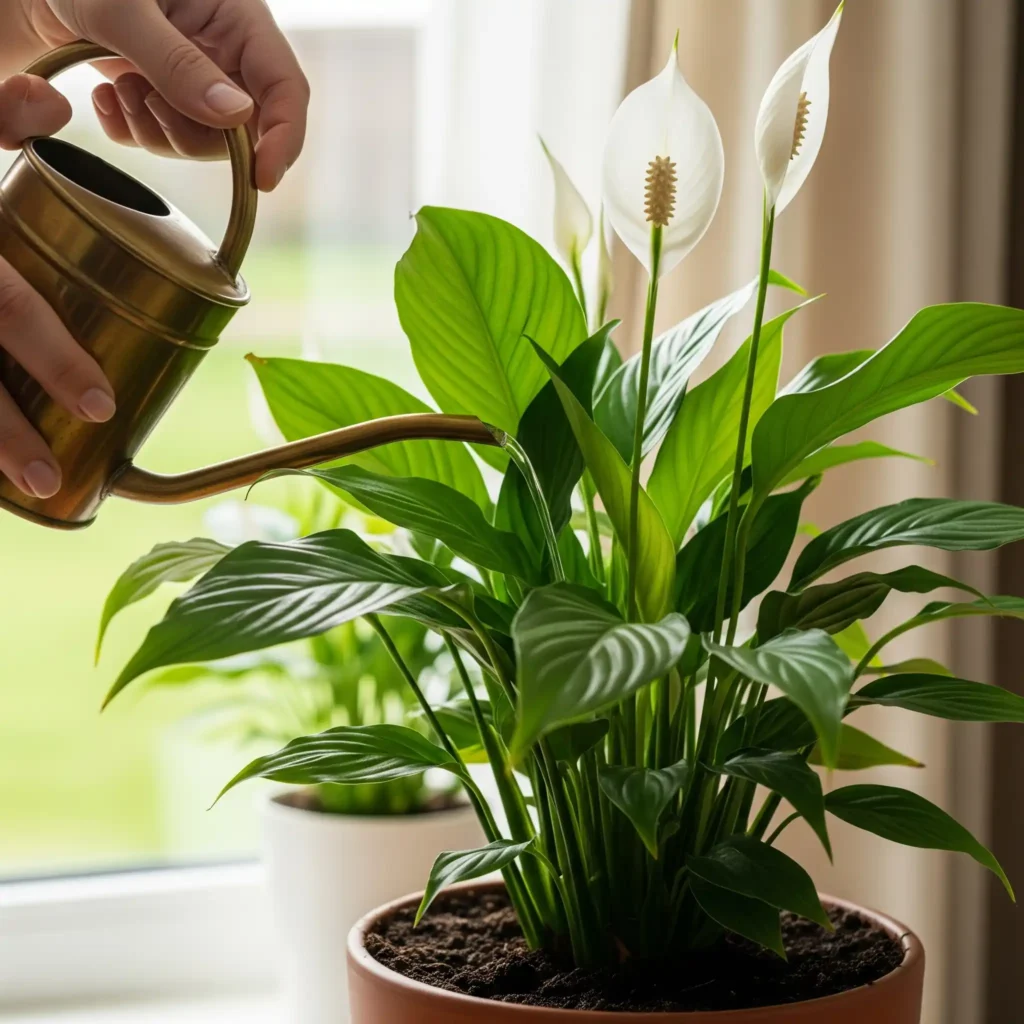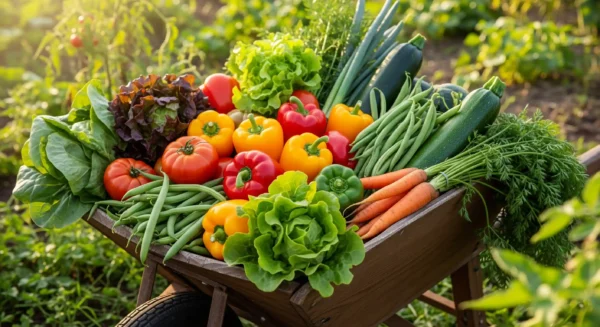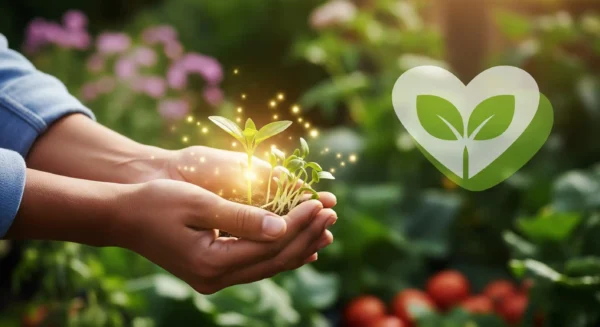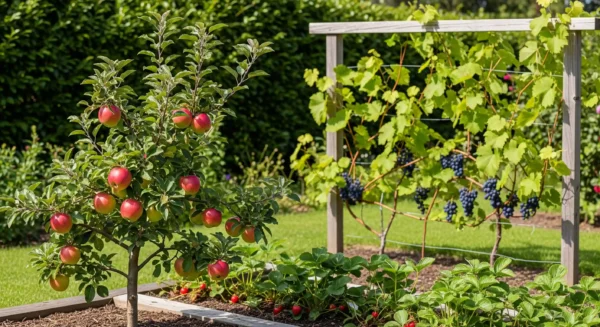A Master Guide for Container Fertilizing and Watering
Every owner of a plant is familiar with the sensation—that everyday doubt as you stand over your lovely potted plant and ask, “Is the soil too wet? Is it rather dry? Does it require nourishment?” This uncertainty is really natural. From my years assisting gardeners of all kinds, I can tell you that, with container gardening, watering and fertilizing are the two most important—and sometimes most frightening—skills to learn.
How then might you get it right? The trick is that no one magic calendar fits every plant. The good news is there are easy, reliable methods to enable you to precisely interpret the needs of your plants. Learning how to respond with the correct amount of water and nutrients at exactly the right moment helps one to master container plant care—that is, knowledge of the special, artificial world of a pot.
This book will help you go beyond general guidance. I’ll show you how to identify the faint indicators of thirst and hunger long before your plants start to suffer, how to use the “finger test” like a seasoned pro, and how to confidently decipher a fertilizer label. At the end, you’ll be a really confident and intuitive plant parent, not just a plant owner.
The Container Puzzle: Why Pots Live in Another World
We must grasp the “why” before we explore the “how.” A plant kept in a container exists in a world quite distinct from that of one in your garden beds. All effective container care starts with understanding these three basic differences.
Volume’s Issue
Consider your garden as a large, fully stocked pantry and water supply reservoir. Grounded plants can send their roots far and wide to meet their demands. Conversely, a pot is like a little studio apartment with a mini-fridge. It has just a limited, little supply of nutrients, water, and soil. The plant depends entirely on you for survival and nutrition; it is a totally closed system.
The Science of Fast Drying
Particularly on a sunny day, have you ever observed how rapidly your pots dry out? This is the result of transpiration, however in a container it occurs on hyperdrive. Unlike a ground-based plant, a container is subjected to drying air and sunlight on all sides—not just from top down. Your potted plants get thirsty far, far faster than their in-ground counterparts since this greatly accelerates the rate of water evaporation from the soil.
Nutrient Leaching Clarified
This is the idea that really divides the amateur from the professional. You are not only satisfying its hunger every time you water your container plant properly—that is, until water streams freely from the drainage holes. You are also aggressively removing a tiny quantity of vital, water-soluble nutrients from the soil. Nutrient leaching is the process by which a plant that was flourishing could suddenly seem pale and exhausted few months later. It depends on you to restock its pantry; it is literally hungry.
Techniques for Perfectly Watering Container Plants
Give up strict plans like “water every Tuesday.” Giving your plants a drink when they truly need it can help them to be cared for the best. These are the tried-and-true techniques for consistently getting it perfect.
The “Finger Test”: The Gold Standard

This is the most dependable approach; it also comes free. Most other expert gardeners as well as myself depend on this method regularly. Just put your index finger into the potting mix till your second knuckle.
- It’s time to water if the dirt feels dry at your fingertip.
- Feel dampness; wait another day and check once more.
That’s just basic. By considering pot size, type of plant, and weather, this approach removes all the uncertainty from the equation.
Trade Tools: Instruments of the Craft
Garden centers may have sales of moisture meters. For particularly big pots or for beginners seeking a little more confidence, these can be useful. In particularly airy or chunky potting mixes, they can occasionally produce misleading readings, though. As the most regularly accurate instrument you have, I always advise learning the finger test.
Techniques of Watering
- Top Watering: This is the most often used approach. The secret is to water gently and completely. Till the ground starts to run freely out of the drainage holes at the bottom of the pot, pour water onto its surface. This guarantees that the whole root ball gets wet without any dry pockets remaining inside.
- Bottom Watering: Particularly for plants prone to crown rot (like African violets) or for stopping fungus gnats, this is a great method. Just set your pot into a sink or saucer covered in a few inches of water. Let the plant remain for thirty to sixty minutes so that capillary action allows the soil to absorb water from the bottom up. Remove the pot and let any extra drip away when the top of the soil seems damp.
- Self-Watering Pots: Built-in reservoirs at the bottom of self-watering pots allow water to be wicked up into the soil as needed. For moisture-loving plants or for a vacation, they can be a terrific choice; but, be careful not to let water linger in the reservoir for too long since it will still cause oversaturated soil.
Visual Cues: Indices of Underwatering vs. Overwatering
Your plant will signal its discontent. One of the most important skills is learning to interpret the indicators.
- Underwatering signs will show the plant looking wilted but the leaves could feel dry and crispy. The leaf margins could get brown. The dirt will be obviously dry and might even separate from the pot’s edges.
- Overwatering symptoms might be perplexing since an overwatered plant also withers. The leaves, though, will seem mushy and floppy rather than crispy. Especially the lower ones, fading leaves are common. The base of the stem may feel squishy, the soil may smell bad, and you will probably have ongoing trouble with small flying fungus gnats.

Feeding for Best Growth in Containers
Fertilizing is necessary for long-term health and vigor, not optional for container plants due to nutrient leaching. But it need not be difficult.
Decoding Fertilizer: Knowing N-P-K
- N: Nitrogen; Imagine “green.” Nitrogen encourages rich, leafy development.
- P – Phosphorus: See “roots and fruits.” Strong root development as well as the production of fruit and flowers depend on phosphorous.
- K: Potassium; consider “vigor.” Potassium helps a plant fight disease and stress and controls its general operations.
Types of Fertilizer for Containers
- Liquid Fertilizers: Based on what I know, this is the finest option available to container gardeners. You water with a concentration diluted in your watering can. This allows you total control over when and how much you feed and supplies nutrients in a form the plant can access right now.
- Slow-Release Granules: Little pellets called slow-release granules can be either sprinkled on top or blended into your potting mix. With every watering, their unique covering breaks down over time and releases a tiny supply of nutrients. Though less control than liquid feed, they are quite handy.

Natural as Opposed to Synthetic
- Organic Fertilizers—such as compost tea, fish emulsion, or kelp meal—are produced from natural sources. They operate by feeding the helpful bacteria in your soil, which then provide the nutrients your plants can access. They slow down acting and over time help to strengthen the soil.
- Synthetic Fertilizers—like the famous blue crystals—are man-made salts. For a temporary boost, they supply nutrients straight to the roots of the plant; yet, they do nothing to enhance the long-term condition of your soil.
Both go nicely. Although synthetic fertilizers are fantastic for providing a rapid, remedial boost to a failing plant, I tend toward organic solutions for long-term plant and soil health.
When is the best to fertilize?
Generally speaking, fertilize often during the active growing season—spring and summer—and cut back or stop in fall and winter. Usually, one feeds with a half-strength diluted liquid fertilizer every two to four weeks when the plant is actively producing fresh leaves or blooms.
Advanced Care: Customizing for Pot Type, Season, and Plant Requirements
Once you have the foundations under control, you may hone your care by thinking through these factors.
Seasonality
The year-round demands of a plant vary greatly. Growth is quick in the long, warm days of summer and you might have to water daily. Growing slows to a crawl in the brief, dark days of winter. Perhaps you only need to water that particular plant every few weeks. This is the main cause a set schedule fails. Go always to the finger test.
The Nature of Pot Material Matters
Your watering frequency is much affected by the pot you use.
- Terracotta: These timeless clay pots let air pass through them. Though they dry out really fast, they look lovely.
- Glazed Ceramic and Plastic: Non-porous and with far longer moisture retention.
- Fabric Pots: Dry out the fastest of all but are quite breathable and offer great aeration for roots.
Identifying a plant with roots bound
A happy plant could turn “root-bound,” in which case its roots occupy the whole pot after a year or two. The indicators are dense root mass on the surface, roots emerging from the drainage holes, and water appearing to run straight through the pot without absorption. A root-bound plant must be repotted into a somewhat larger container using fresh potting mix; it cannot efficiently absorb water or nutrients.
Leachate and flushing
Mineral salts accumulating in the soil over months of fertilizing can finally burn the roots of your plant. “Flushing” your pots once every four to six months helps prevent this. Just bring the plant to a sink or outside and water it liberally with pure, simple water, allowing it to drain totally. This dissolves the extra salt accumulation.
Fixing Your Container Maintenance
Problems might develop even with the best of care. Here is how to identify the most often occurring problems.
Common Nutrient Deficiencies
| Syndrome | Most likely deficient | Methods of Fixing |
|---|---|---|
| Yellowing of some older, lower leaves | N = nitrogen | Apply one somewhat higher in nitrogen or a balanced liquid fertilizer. |
| Restricted development, dark or purple leaves | P, the phosphorus | Apply a fertilizer having a larger middle number—that is, a “bloom booster”. |
| yellowing along the margins of older leaves | K is potassium. | Put on a balanced liquid fertilizer. |
| Yellowing between the nascent leaf veins | Fe, iron: | Use a fertilizer including chelated iron or another micronutrient. |
Troubleshooting
- Problem: “My plant has brown, crispy tips.”
- Solution: This is a classic indicator of low humidity, underwatering, or in some sensitive plants—a reaction to minerals in tap water.
- Problem: “My soil or the outside of my terracotta pot shows a white, crusty film.”
- Solution: The answer is benign fertilizer salt accumulation. This indicates that it’s time to flush the pot as detailed here.
- Problem: “I have tiny little flies buzzing about the soil of my plants.”
- Solution: These are fungus gnats, and their presence indicates overwatering clearly. They deposit their eggs on regularly moist ground. Let the top one to two inches of your soil dry out totally between waterings to interrupt the cycle.
Your Most Frequent Questions Answered
In summer, versus winter, how often should I water my container plants?
While plants are actively developing and evaporation is high in the summer, you should water far more often; in the winter, growth slows down and you should water far less. But always rely on the “finger test” to determine precisely when your particular plant requires water in any season rather than a calendar.
How can I find out whether my potted plant needs water?
Most dependability comes from the finger test. Stuck your finger into the ground to the second knuckle. It’s time to water if the ground at the tip seems dry. Should it seem damp, wait and check once more the next day.
When and in what manner should I fertilize containers?
During the spring and summer, fertilize often; during the dormant season, fall and winter, cut back or cease. Most plants would find a great schedule in applying a diluted liquid fertilizer every two to four weeks. Water the plant first always to prevent burning the roots before fertilizing.
What effect on watering frequency does pot material have?
Terracotta and cloth are porous materials that dry out somewhat rapidly and require more frequent watering. Plastic and glazed ceramic, among non-porous materials, hold moisture far longer and require less regular watering.
Finish
Although a container gives a plant an artificial and demanding habitat, you are quite within reach in terms of ideal care. The secret is to go from a gardener with a calendar to one who watches and reacts. Through their color of leaves, feel of their soil, and general stance, your plants are continuously speaking their wants to you. Learning to speak their language will help you to master container plant care with these easy, straightforward approaches.
They will thank you with the kind of vivid, healthy development that makes having plants so enjoyable when you know when they need a soothing sip or a good meal. Now you know; go help your plants flourish!









